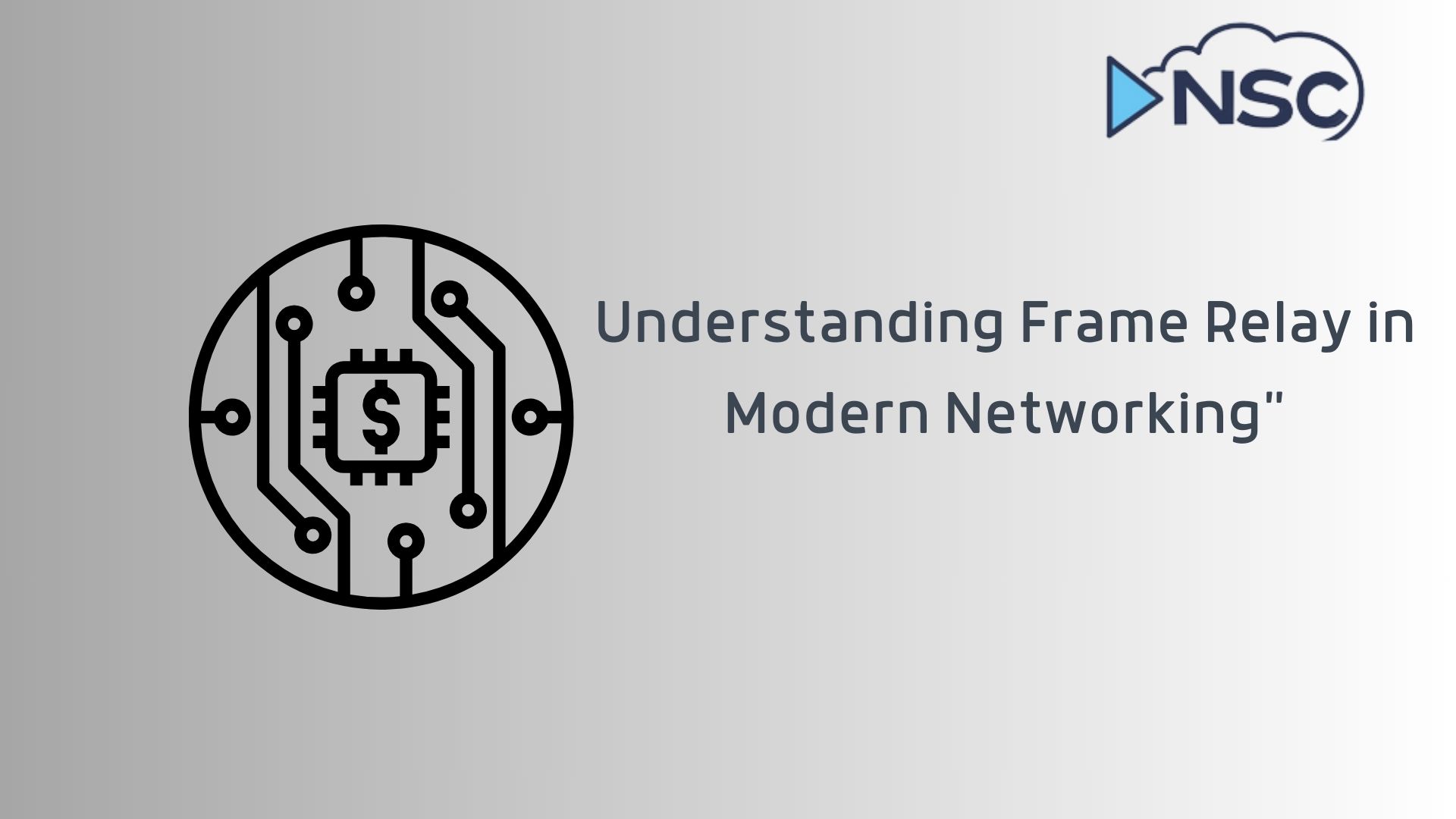Frame Relay, a pivotal technology in the landscape of network communication, continues to hold its ground amidst the evolution of networking technologies.
This blogpost delves into the mechanisms and enduring relevance of Frame Relay, highlighting its components, operational protocols, and configuration techniques. By understanding Frame Relay's intricacies, IT professionals can optimize their network infrastructures, effectively integrating both legacy and contemporary technologies to enhance overall network performance.
As we explore the role of Frame Relay in modern networks, we'll also compare it with newer technologies like MPLS, providing a comprehensive view of its operational advantages and limitations.
This insight is crucial for those managing or transitioning from traditional network setups to more advanced frameworks, ensuring they make informed decisions that reflect both current capabilities and future growth.
What is Frame Relay?
Frame Relay is a high-performance WAN protocol that operates at the physical and data link layers of the OSI model. Originally designed for telecommunication services, it ensures efficient data transmission over long distances. Frame Relay is derived from the older X.25 packet-switching technology, but it eliminates some features like error correction, relying instead on end-to-end error checking and correction mechanisms.
This technology utilizes packet-switched networking that incorporates Data Link Connection Identifiers (DLCI), unique numbers that designate the path data takes through a network and distinguish different virtual circuits on the same network. Known for handling high bandwidth efficiently, Frame Relay adapts simply to physical network changes without complex reconfiguration.
Core Components of Frame Relay
Several core components define the functionality of Frame Relay networks:
- Data Link Connection Identifiers (DLCI): Unique labels for each session in the network, crucial for routing data packets.
- Virtual Circuits: These include Permanent Virtual Circuits (PVCs) and Switched Virtual Circuits (SVCs). PVCs are static, remaining active as long as needed, akin to leased lines. SVCs are temporary, set up and dismantled based on data transfer needs.
- Local Management Interface (LMI): An enhancement to the basic Frame Relay specification, LMI provides mechanisms for status monitoring and control, facilitating the exchange of operational status and virtual circuit information between network devices.
Benefits of Using Frame Relay
Frame Relay provides several advantages in wide area network (WAN) environments:
- Efficiency: It maximizes throughput by eliminating overhead associated with error correction.
- Flexibility: The technology allows dynamic adjustment of network resources based on varying bandwidth needs, offering cost-effective solutions for businesses.
- Scalability: Frame Relay supports increasing network sizes efficiently without significant hardware upgrades.
Understanding these components and benefits of Frame Relay is essential for comprehending its operation and ongoing relevance in modern networking environments.

How Frame Relay Works
Frame Relay technology simplifies the process of packet transmission across a network by using a method known as frame switching. This approach allows Frame Relay to efficiently manage data packets among various endpoints within a network.
Establishing Connections
Frame Relay creates connections using two types of virtual circuits: Permanent Virtual Circuits (PVCs) and Switched Virtual Circuits (SVCs). PVCs are pre-established and maintain a continuous connection between two points, much like leased lines. SVCs, however, are temporary and are established as needed for the duration of a data transfer session.
Data Transmission and Routing
Each virtual circuit in a Frame Relay network is identified by a unique Data Link Connection Identifier (DLCI). These DLCIs play a crucial role in routing frames to their intended destinations. When a device sends a frame, the Frame Relay network uses the DLCI to determine the correct path for the frame across the network.
Error Handling and Efficiency
Unlike traditional networking protocols that employ extensive error-checking mechanisms, Frame Relay assumes a relatively error-free transmission medium and thus primarily focuses on error detection, not correction. This assumption allows for faster data processing and less overhead, enhancing the efficiency of data transmission.
Frame Relay Congestion Control
Congestion control in Frame Relay is minimalistic, which helps in maintaining high speeds but requires careful network management. The protocol uses Forward Explicit Congestion Notification (FECN) and Backward Explicit Congestion Notification (BECN) indicators to inform nodes about network congestion. These indicators help devices decide if they need to throttle data sending rates to ease congestion.
Frame Relay and Modern Networking
While Frame Relay was once a staple in WAN environments, modern technologies like MPLS have begun to replace it in many scenarios. However, Frame Relay's simplicity and cost-effectiveness still make it a viable option for certain network configurations, particularly where legacy systems are prevalent.
Understanding how Frame Relay works provides valuable insights into both its capabilities and its limitations. This knowledge is crucial for network professionals who manage or transition from Frame Relay to more advanced network solutions.
Frame Relay Configuration and Applications
Configuring Frame Relay on network devices involves understanding and implementing several key components that ensure efficient operation and connectivity. This section provides a step-by-step guide on setting up Frame Relay, particularly focusing on configurations commonly used in Cisco devices.
For those looking to evolve their network infrastructure, integrating MPLS can be a step forward. Our courses like IP MPLS Quality of Service provides a pathway for learning about advanced networking techniques that can complement or replace Frame Relay solutions.
Initial Configuration
To begin configuring Frame Relay, it is crucial to set up the physical interface on the router that will connect to the Frame Relay network. This involves entering network-specific commands that define the encapsulation type and other interface parameters:
- Define the Encapsulation Type:
Router(config)# interface Serial0/0/0 Router(config-if)# encapsulation frame-relay
This command specifies that the interface will use Frame Relay encapsulation. - Disable Inverse ARP: Inverse ARP can be disabled to manually define DLCI mappings, enhancing control over network traffic routes:
Router(config-if)# no frame-relay inverse-arp
Configuring DLCIs
Once the physical interface settings are established, the next step is to configure the Data Link Connection Identifiers (DLCI). DLCIs are essential for identifying virtual circuits and routing Frame Relay frames:
- Assign DLCIs to Interfaces: For a point-to-point setup, assign a DLCI to a subinterface:
Router(config)# interface Serial0/0/0.1 point-to-point Router(config-subif)# frame-relay interface-dlci 101 - Configure Frame Relay Maps: If necessary, static Frame Relay maps can be used to link DLCIs with IP addresses:
Router(config-subif)# frame-relay map ip 192.168.1.2 101 broadcast
This configuration links the IP address to the DLCI and enables broadcasting.
Practical Applications of Frame Relay
Frame Relay is typically employed in scenarios where cost-effective, scalable WAN connections are needed without the overhead of full mesh networking:
- Corporate WANs: Frame Relay is suitable for connecting various branches of a business with high-efficiency due to its support of PVCs, which provide stable and continuous connections.
- Service Integration: Many older network architectures integrate services like VoIP over Frame Relay by prioritizing traffic, demonstrating the protocol's flexibility and capability to support a range of services.
Frame Relay remains a relevant technology in certain contexts, particularly where legacy systems are involved, or cost constraints prevent the adoption of newer technologies like MPLS. For network professionals, understanding how to configure and apply Frame Relay effectively is essential for maintaining robust and efficient network operations.
Summary
As we have explored throughout this article, Frame Relay remains a viable technology in specific network scenarios, despite the rise of more advanced technologies like Multiprotocol Label Switching (MPLS). Its simplicity, cost-effectiveness, and capability to efficiently handle data with minimal protocol overhead make it suitable for certain environments, especially where legacy systems are prevalent.
Continued Relevance of Frame Relay
- Cost Efficiency: For organizations with limited networking budgets, Frame Relay offers a robust solution without the need for extensive infrastructure investments.
- Legacy Support: Many older telecommunications systems and networks are built around Frame Relay, making it essential for maintaining compatibility and operational continuity.
Future Outlook
While MPLS and other newer technologies provide enhanced features and greater flexibility, the transition from Frame Relay may not be practical or necessary for all organizations. Network designers and IT professionals must weigh the benefits of potential upgrades against the costs and disruptions they might entail.


